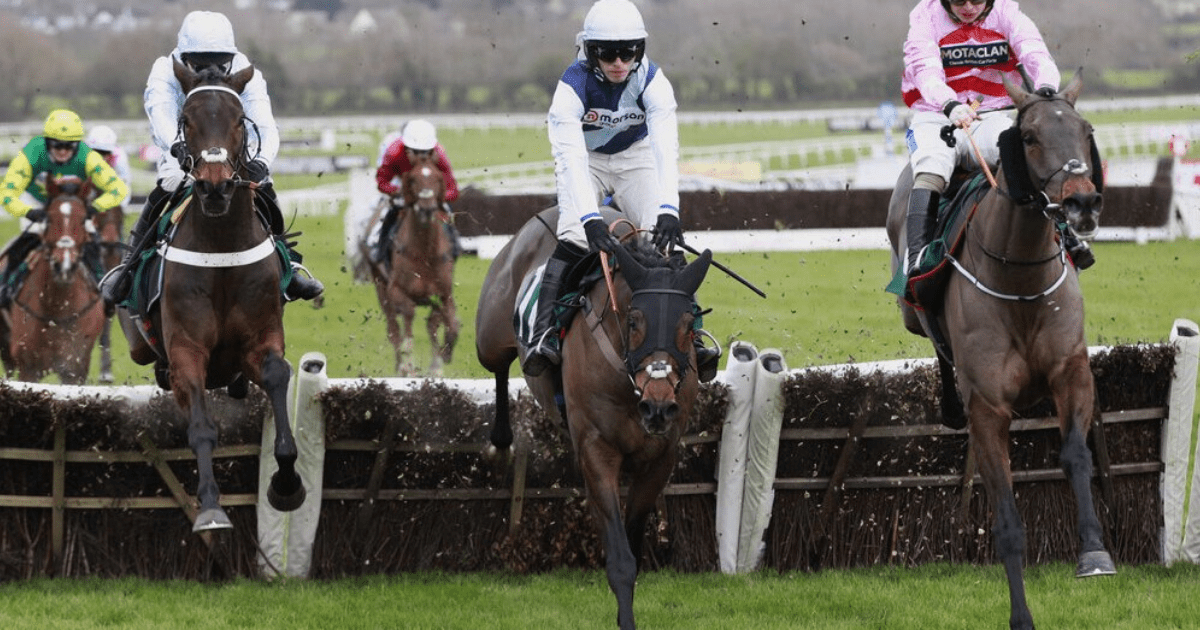Nicky Henderson, the renowned horse racing trainer, is feeling the pressure as he hopes his 'secret weapon' will secure a spot in the upcoming Coral Cup at the Cheltenham Festival.
Meet Doddiethegreat
One of Henderson's standout contenders is Doddiethegreat, an eight-year-old handicapper named after the late rugby union icon Doddie Weir. Despite being lightly raced, Doddiethegreat has shown immense talent, most recently finishing fourth in the Betfair Hurdle.
A Step Up in Distance
Henderson believes Doddiethegreat is ready for a longer distance race and is eyeing the Coral Cup for him. However, with a current rating of 132 and the final cut-off last year at 134, there are concerns about him making the lineup.
Henderson's Worries
Expressing his worries, Henderson stated, "I’m worried he might not get in which really is hurting me. He wouldn’t have got in last year and if he doesn’t it will be really sad because he is crying out for a step up in trip."
Potential Alternatives
While the Coral Cup remains the target, Doddiethegreat also holds an entry in the Martin Pipe Handicap Hurdle, providing a viable alternative with a lower cut-off rating from the previous year.
Frequently Asked Questions
Do different horse races take place in the UK?
Yes, there are various types of horse races in the UK, falling primarily into the categories of Flat racing and National Hunt (or jump) racing. Flat racing does not include obstacles and is run on flat tracks from 5 feet to more than 2 miles. National Hunt racing emphasizes both the speed and jumping ability of the horse, with races like hurdles and steeplechases featuring a series of obstacles. There are many variations of these two broad categories. For example, handicaps, maidens and conditions races. Each with its own rules and criteria.
What is the handicap system in UK horseracing and how does it work?
In UK racing, the handicapping system was designed to give each horse an equal shot at winning. Essentially, different weights are assigned to horses based on previous performance. Weights are heavier for better horses to equalize the playing field with horses who have had poorer performances in the past. The British Horseracing Authority oversees the handicapping in the UK. A team of handicappers is constantly updating ratings following race results.
How do racehorses get bred for racing and how are they selected?
Racehorses are usually bred with the specific intention of excelling on the racetrack. Breeders choose sires and mares who have proven racing pedigrees in order to produce offspring that are characterized by speed, endurance and temperament. Thoroughbreds, which are the most common breeds associated with racing in Britain, are closely tracked. Potential racehorses go through a process of selection that includes a pedigree assessment, physical conformation assessments and their performance in training.
What are Britain’s most prestigious races for horses?
The United Kingdom is home to several world-renowned horse racing events. The most prestigious of these include Royal Ascot and the Grand National in Aintree. These events are not only a showcase of the best equine talent, but they also have a rich history and tradition. They’ve become social occasions that include distinctive dress codes.
What’s the meaning of jockeys’ silks?
The jockeys silks is the colorful, patterned outfit worn during racing. Each set is unique, and each horse owner’s registration allows officials and spectators to easily identify the horses. Silks are often a tradition or hold sentimental value for their owners. They can be adorned with a variety colors, patterns, and symbols.
How are horses and their riders kept safe during a racing event?
Safety is paramount in UK horseracing. This includes both the horses and their riders. Stringent regulations are in place to ensure that racecourses meet high safety standards, including the condition of the tracks and the quality of the jumps. Horses undergo health checks before and after races, and jockeys are required to wear safety gear such as helmets and body protectors. In addition, there are rapid response teams as well as veterinarians who are ready to take care of any incident.
Statistics
- There are over 8,000 active racehorse owners in the UK, ranging from royals to common citizens.
- The Royal Ascot, held annually in June, draws crowds of 300,000 over its five-day meeting.
- In the UK, more than 14,000 people are employed directly in the horse racing industry.
- Horse racing contributes an estimated £3.7 billion to the UK economy directly and indirectly each year.
- Approximately 6 million people attend horse racing events in the UK each year, making it the second most popular spectator sport in the country.
- The National Hunt racing season in the UK sees approximately 1,000 races with hurdles or fences each year.
External Links
thejockeyclub.co.uk
tattersalls.com
thejockeyclub.co.uk
racingtv.com
thejockeyclub.co.uk
racingpost.com
How To
How to read a racecard for UK horse racing
Reading a racecard effectively can greatly enhance your horse racing experience. It contains details like horse names, number, color of jockey’s silks (draw numbers), form figures, weight, trainer and jockey. The form figures reflect the horse’s performances in recent races. They include numbers and letters that indicate the reasons why horses did or didn’t finish. The weight can represent the handicap weight and the set weight when weight is based on age. Understanding the information provided can assist in predicting race results and choosing bets. Familiarize yourself with these symbols and terms to advance your racing knowledge.

